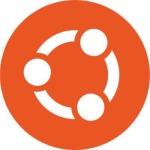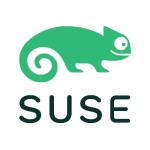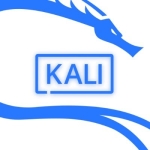What is our primary use case?
Our primary use case for Red Hat Enterprise Linux (RHEL) is hosting enterprise applications that rely heavily on databases and middleware technologies.
The platform supports both application hosting and large-scale data collection, enabling us to manage and process significant volumes of data efficiently. RHEL provides the stability and reliability required for running these critical workloads in our environment.
How has it helped my organization?
Red Hat Enterprise Linux (RHEL) has significantly improved our organization by providing a stable, secure, and standardized operating environment for our applications.
Its reliability has reduced downtime and improved performance consistency across workloads.
The strong security features and regular patching process have enhanced our compliance posture and reduced operational risk.
In addition, the scalability of RHEL allows us to support growing data collection and application hosting needs without major infrastructure challenges.
Overall, RHEL has helped streamline system management, improve efficiency, and provide a solid foundation for our critical business operations.
What is most valuable?
The most valuable features of Red Hat Enterprise Linux (RHEL) for us are its robust security capabilities, stability, and enterprise-grade support. These features ensure that our production environment remains secure and reliable, which directly reduces operational risks.
I have been involved in several Red Hat Enterprise Linux (RHEL) upgrades and migrations, both on-premises and in the cloud. In my experience, RHEL’s built-in security features greatly simplify risk reduction and compliance management. Our team works closely with the security group on daily scans and vulnerability reports, and RHEL enables us to address findings quickly by streamlining patching and updates. This process has proven reliable, allowing us to remediate vulnerabilities and apply fixes in a timely manner.
RHEL has also helped us mitigate downtime and reduce risks during system changes. While I personally prefer replacing production systems with thoroughly tested builds in lower environments rather than in-place upgrades, RHEL provides the flexibility and stability needed to support both approaches.
One of the key differences compared to other platforms is the reliance on command-line operations. While Windows environments tend to emphasize GUI-based management, RHEL encourages working directly in the CLI. This has been a positive shift for our team, as we continue to expand skills across both Linux commands and PowerShell.
RHEL consistently provides the stability, support, and knowledge base required to keep mission-critical systems running smoothly. With excellent vendor support and strong documentation, it fully meets our enterprise needs.
Additionally, RHEL has addressed key pain points related to security and usability, making it one of the strongest platforms from a service-level perspective. We have also recommended RHEL to clients, particularly in cases where migrations from CentOS are required, as it provides a trusted and stable foundation for critical workloads.
What needs improvement?
From a hands-on experience perspective, Red Hat Enterprise Linux (RHEL) could be improved in terms of user experience and ease of adoption, especially for teams that are still building their knowledge of the platform. Enhanced usability tools, more intuitive configuration options, and improved documentation or guided workflows would help reduce the learning curve.
For future releases, additional features such as built-in automation templates, more advanced monitoring dashboards, and tighter integration with hybrid cloud environments would further increase productivity and make system management more efficient.
For how long have I used the solution?
I have been using Red Hat Enterprise Linux (RHEL) for approximately two years. Our adoption began with multiple environments, and it has since become the standard platform for our current operations.
What do I think about the stability of the solution?
Red Hat Enterprise Linux (RHEL) is extremely stable and well-suited for production workloads. We have run hundreds of instances across a wide range of applications, and the operating system consistently delivers reliable performance with minimal downtime. Its predictable update and patching process, combined with strong vendor support, ensures that our critical systems remain secure and available.
Overall, RHEL provides the stability we need to confidently support mission-critical operations.
What do I think about the scalability of the solution?
Red Hat Enterprise Linux (RHEL) scales very effectively across both on-premises and cloud environments. We run hundreds of instances supporting diverse applications, and the platform has consistently handled growth without major performance issues.
Its flexibility in supporting small workloads as well as large, mission-critical deployments makes it a reliable choice for enterprise scalability.
How are customer service and support?
Our experience with Red Hat customer service and support has been excellent. Support teams are responsive, knowledgeable, and provide clear guidance for troubleshooting and resolving issues.
How would you rate customer service and support?
How was the initial setup?
The initial setup of Red Hat Enterprise Linux (RHEL) was moderately complex due to the need to configure multiple services, integrate with existing databases and middleware, and ensure security compliance from the start. However, the clear documentation, enterprise support, and guided best practices provided by Red Hat made the process manageable.
Once the initial environment was established, ongoing configuration and scaling have been straightforward, allowing us to reliably deploy and manage production workloads.
What about the implementation team?
The implementation of Red Hat Enterprise Linux (RHEL) was carried out by our in-house team. Our staff handled the installation, configuration, and integration with existing systems, leveraging Red Hat’s documentation and support resources.
What was our ROI?
The ROI of Red Hat Enterprise Linux (RHEL) is reflected in reduced downtime, improved system security, and streamlined operations. By providing a stable, supported platform, RHEL minimizes operational risks and resource overhead while enabling faster deployments and easier maintenance.
What's my experience with pricing, setup cost, and licensing?
The subscription model is cost-effective, as it provides enterprise licensing and also includes access to Red Hat support and training resources. This combination has improved our team’s knowledge of RHEL features and enabled us to adopt new capabilities with confidence.
Which other solutions did I evaluate?
What other advice do I have?
I would confidently rate Red Hat Enterprise Linux (RHEL) a ten out of ten for its reliability, security, and enterprise support.
Which deployment model are you using for this solution?
Hybrid Cloud
If public cloud, private cloud, or hybrid cloud, which cloud provider do you use?
Amazon Web Services (AWS)
Disclosure: My company does not have a business relationship with this vendor other than being a customer.



















